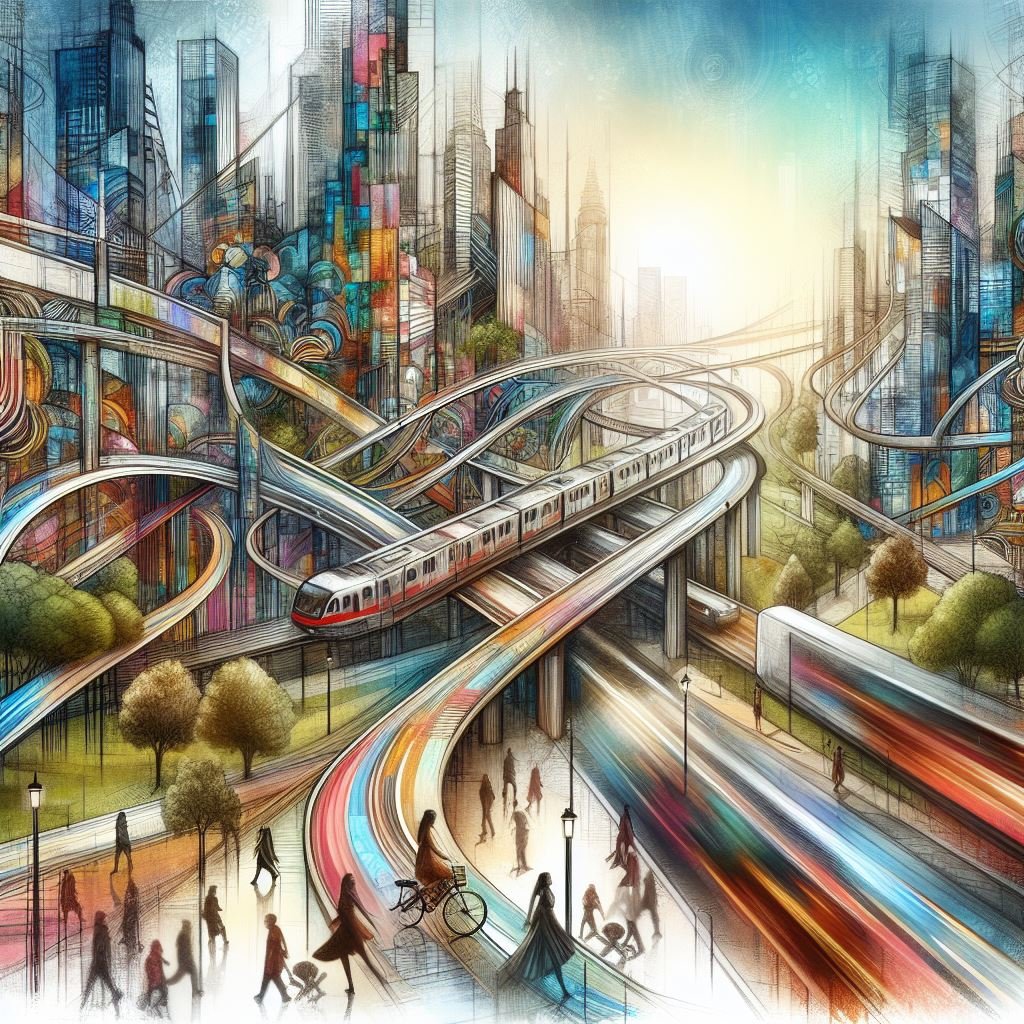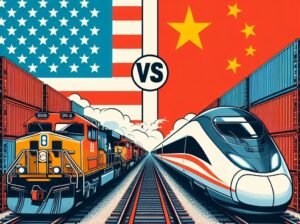by
Marcos Kleber R Felix
Automobiles have been among us for about 140 years, when visionaries like Karl Benz and Gottlieb Daimler had the brilliant idea to replace the horses of a cart with a combustion engine. Well, this successful technology will at some point in our future be victim to an even greater success: the advancement of the industrial and technological revolution.
In this text, I will make a difficult prediction, just like Thomas Malthus who in the 1800s predicted that at some point in the future, humanity would go through a great crisis, when the demand for food from a population that was growing at ever-increasing rates, could no longer be met by the supply of scarce agricultural resources of a finite Earth.
In the future, the combination of a population with an increasingly high purchasing power with an even more intense demand for nobler uses of the Earth’s surface, will require cities to be denser and more compact, through an urbanism totally dedicated to the pedestrian, who will prefer to travel long distances by trains and subways and not by cars.
Malthus became notoriously known for his unfulfilled prediction. More than 200 years later, the Earth’s population has jumped from 1 billion living souls to more than 8 billion mouths eager for food. And we are not even close to the catastrophe. Not only we are more in numbers, but we also consume many more calories than 200 years ago, thanks to capitalism and the optimization of industrial production methods.
The average height of the world population has increased significantly in the last 200 years, for example. At the end of the 18th century and the beginning of the 19th century, the average height of men was about 170 cm. Today, the average height of the male population in many developed countries is about 177 cm, due to better nutrition and health conditions.
My prediction is not pessimistic like Malthus’s, the future without cars will be better than the present of metal carts propelled by electricity or fossil fuels. Instead of the dystopia of the food crisis, we will be more prone to a utopia of cities without cars. The scarcity of spaces on the surfaces of cities, which will house an increasingly rich population, will lead to the replacement of cars by railways.
The effect of capitalism and land scarcity on the future of urbanism
In the case of food, we only survived Malthus’ prediction because agricultural productivity was much higher than population growth rates. In the case of automobiles, the average family income and the global reduction of poverty will make it so that at some point in the future, all citizens of the planet will be economically able to own a car.
However, long before that day arrives, there will not be enough space in cities for so many cars to circulate empty or park outside offices, stores, and apartments, unless if the flying car from The Jetsons is invented, which will once and for all decree the extinction of the terrestrial automobile as we know it.
For an example, let’s consider the population of Brazil, my country, which today is about 217 million inhabitants. According to the most recent data, over 149.1 million people, or about 69.9% of the population, are in the age group of 15 to 64 years. Our fleet of passenger cars is approximately 38.3 million vehicles. This means that we must have at least 100 million citizens of driving age, but without sufficient economic means to do so.
Now, imagine the traffic in Brazilian cities if all citizens had sufficient economic means to drive cars. How would Brazilian cities deal with 4 times more automobiles than we have today? In the future, we will be less poor, and cities will be scarcer in areas available for automobiles.
Let’s forget Brazil for a moment and reflect on two models of development. The first, from the USA, was characterized by the automotive industry, which promoted dispersed and low-density urbanism to accommodate more and more vehicles. The second model, adopted in Europe, focused on densely populated cities, served by efficient train and subway systems. Now, which path will humanity follow?
European pedestrian-friendly urbanism of life
The European way of life is not for cars. A notable example is Paris, which is expanding its metro-rail network. By 2030, more than 200 km of new subway lines will be built, connecting the city’s two airports, Charles de Gaulle and Orly, to the suburban regions through the Grand Paris Express. Meanwhile, London has just inaugurated 140 km of the new Elizabeth line, which connects the city from east to west, and is preparing for another super urban train line from north to south. In addition, several other European cities are building new subway lines to connect airports, suburbs, and new districts in their dense metro-rail networks.
In Europe, even electric cars are considered inadequate. They harm the health of cities, not only due to direct pollution but also because they occupy valuable space that could be better used for other purposes. In the future, more people will have the economic means to own a car, but the demand for sustainable spaces for leisure, housing, work, and food production will be much greater than the need for automobile circulation.
The automobile has been with us for only 140 years. Before that, we either walked or used animal-drawn carts or the animals themselves as a means of transportation, with all the inconveniences of that solution, including the bad smell. It is not surprising that the very invention of the subway as a mobility solution is related to the aversion of the population of London to living in a city full of horse feces.
This recent change in our way of life deserves reflection. Not long ago, life was like this: my grandfather, for example, built ox carts. The first automobile factory only arrived in Brazil in the year 1919. The automobile was a luxury good, which is becoming more and more popular day by day. And in the near future, it will be so popular that it will not be possible to use it.
It’s worth remembering that humans are, by nature, pedestrians. The taste for walking, especially short distances, is in our behavioral DNA. We spent thousands of years walking to survive, those who didn’t walk have already been left by the wayside of evolution. However, the scarcity of physical space will lead us, paradoxically, to increasingly longer walks. We prefer what can be easily accessed on foot instead of a journey that leads us to hours of traffic. Have you noticed that small cities or those well served by subways are preferable options for tourism?
Because of the urbanism of happiness – if there is an architecture of happiness, there must also be an urbanism of happiness – the richest and most developed populations will prefer densely populated cities with mixed-use buildings, where everything can be done on foot a few steps from home. If there is a need to go further, let the displacement be made by subway or train. Descend into an underground tunnel and take an electric train to the destination, like in Paris, Berlin, London, and Copenhagen, but with a much larger offer than we have today.
The reversal of American urbanism
In the future, the problem will not be the lack of money, but the lack of space. It will be more sensible to build tunnels for trains than for electric cars, contradicting Elon Musk’s Boring Company proposal.
The surface will be for pedestrians, at most for cyclists, and urban roads will be mainly occupied by the transport of goods. The car will not be completely extinct, but it will be very restricted to rural needs, for which the demand for passenger trips by trains is not sufficient, even in the rich, technological, and developed future.
And the USA? What will happen to the American suburb, a product of the large automakers of cars powered by fossil fuels? The capitalism of American oil and vehicle producers shaped American urbanism as we know it. But then, what changes?
China and electric cars will have a substantial side effect in the USA for automakers and fuel distributors who led the lobby of the American suburb. How will American planners react when all the money is going to Beijing? I think the answer to this question will come in densification, as it will no longer be profitable, not for the American pocket, to make the citizen drive for endless kilometers and kilometers.
The problem of travel time on highways and the lack of space to live, plant, work, and have fun will also exist in the USA, as it already exists in Europe. The historical issue of the American industry lobby will be the variable in transition, with the decrease in economic power of combustion car manufacturers and oil producers.
The future is on the rails and not in cars
My thesis is that the whole world will Europeanize over the years. We already see this happening in Australia, Japan, and China itself. It is only a matter of time to happen in Africa, the Middle East, and the Americas, with the USA being the last to Europeanize, not for lack of money, but due to the inertia of having followed the wrong path.
Even if it happens last among the richest, this reflection is already happening in America. This can already be noticed with the plans for the demolition of highways in urban centers and the greater appearance of railway projects in large cities, like the new intercity train projects seen in Texas, Nevada, California, and Florida.
The end of the car as we know it will not happen in the next 100 years, it will still not be enough time to enrich the entire planet, but it will happen. In this process of extinction of the car as we know it, it will be smarter, automated, and increasingly smaller. Because physical space is the most valuable finite variable.
There is no room for cars for everyone because everyone will be many and the space of cities will be increasingly disputed, because everyone will demand much more forests and farms than we have today. Cities will have to occupy the minimum possible space on the surface of the Earth. So, we will have to live more in buildings than in houses and we will have to walk much more on foot and by train than by car, no matter how smart, economical, and electric the small cars of the future are, even if they are flying.
Note:
Este texto possui uma versão em português.
References:
Botton, A. de. (2008). The Architecture of Happiness. Editora Rocco.
Flink, J. J. (1990). The Automobile Age. MIT Press
Jacobs, J. (1992). The Death and Life of Great American Cities. Vintage Books.
Manjoo, F. (2020). I’ve Seen a Future Without Cars, and It’s Amazing. The New York Times.
McDonough, W., & Braungart, M. (2002). Cradle to Cradle: Remaking the Way We Make Things. North Point Press.
Mitchell, W. J., Borroni-Bird, C. E., & Burns, L. D. (2015). Reinventing the Automobile: Personal Urban Mobility for the 21st Century. MIT Press.
Newman, P., & Kenworthy, J. (2015). The End of Automobile Dependence: How Cities are Moving Beyond Car-Based Planning. Island Press.
Piketty, T. (2017). Capital in the Twenty-First Century. Belknap Press


